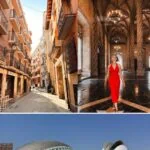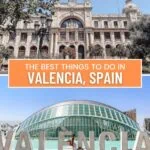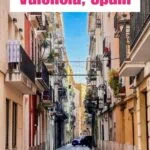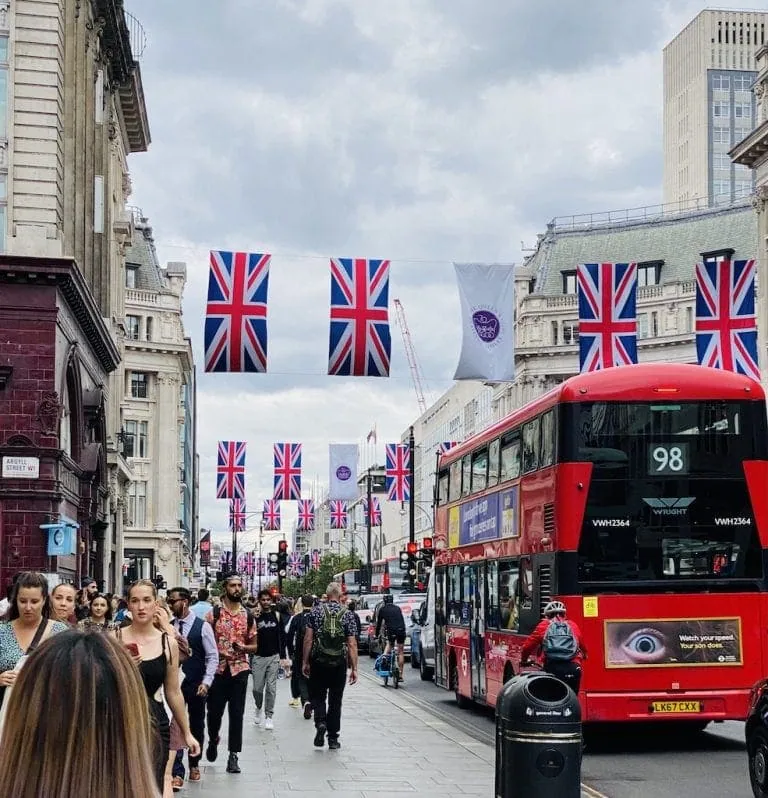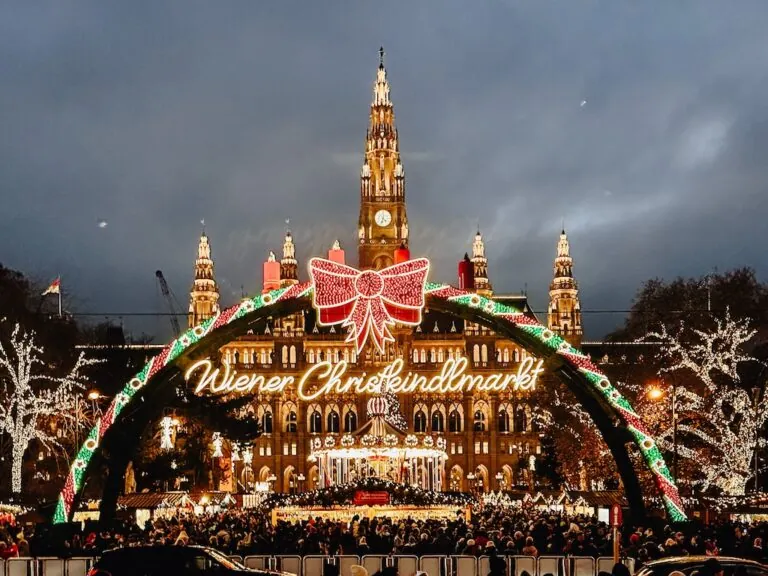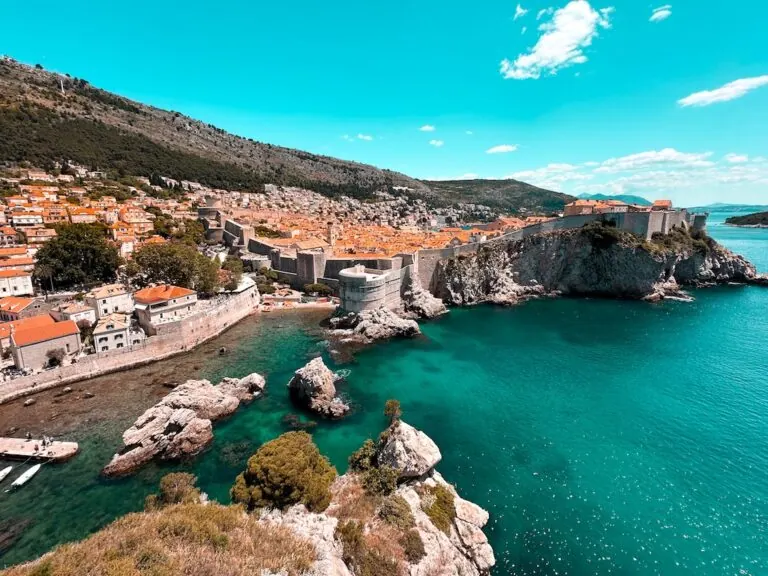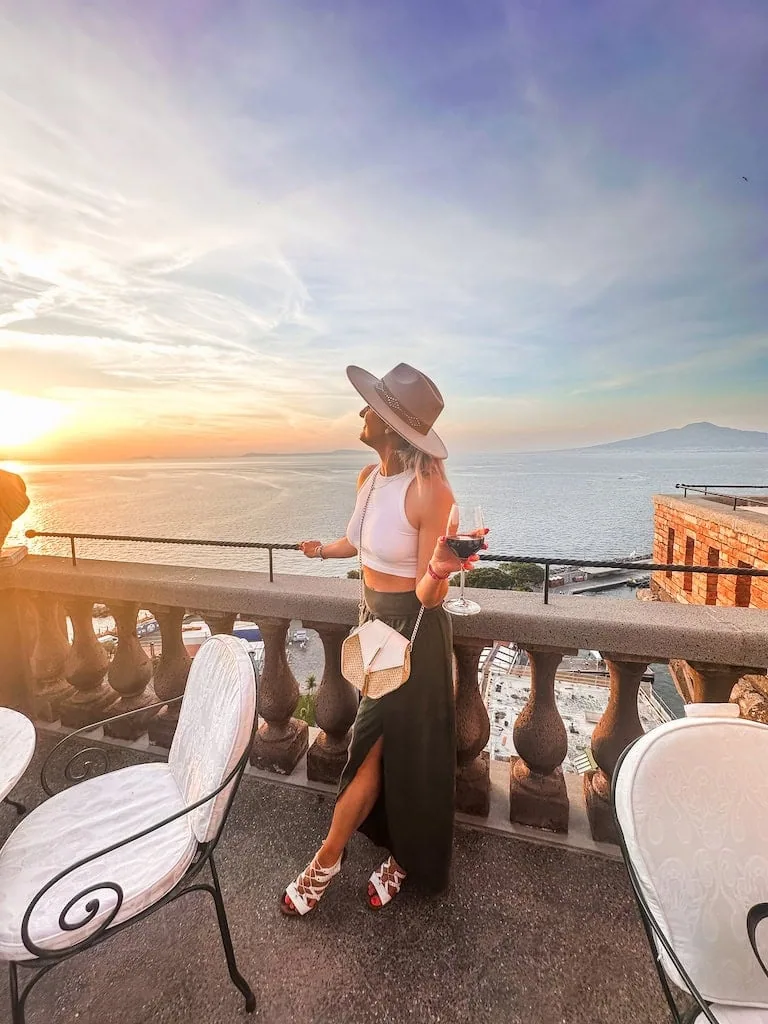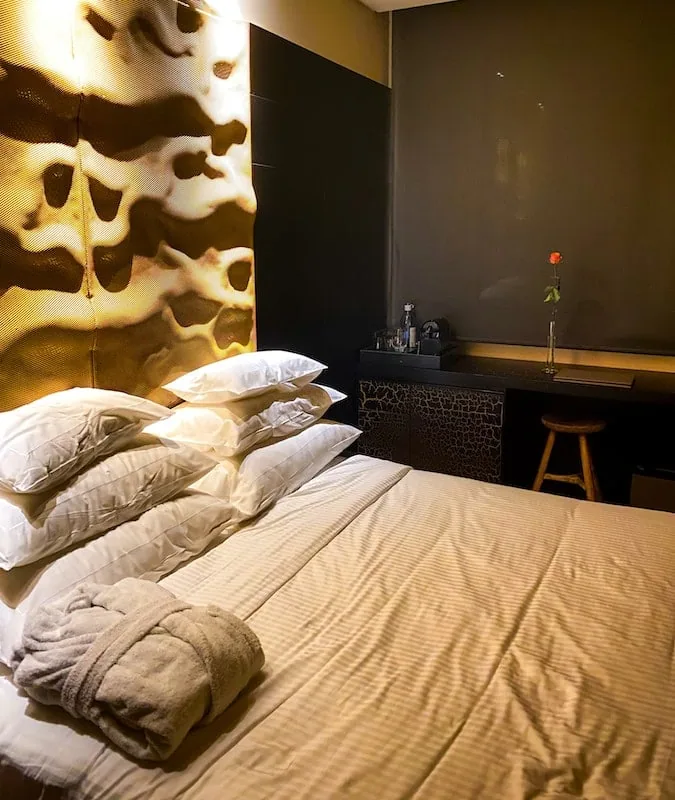Want to discover the best things to do in Valencia? If we haven’t met, I’m Gina, and I’m an aesthetic traveler who never turns down an opportunity to explore a new Spanish city. From the paintings of the Church of San Nicolás to the gleaming white curves of the City of Arts and Sciences, Valencia blends history, art, and sunshine in a way that’s impossible not to love. This post is full of helpful info, but if you still have questions, use the Contact Me form at the end. I’ll be your travel BFF by the end anyway!
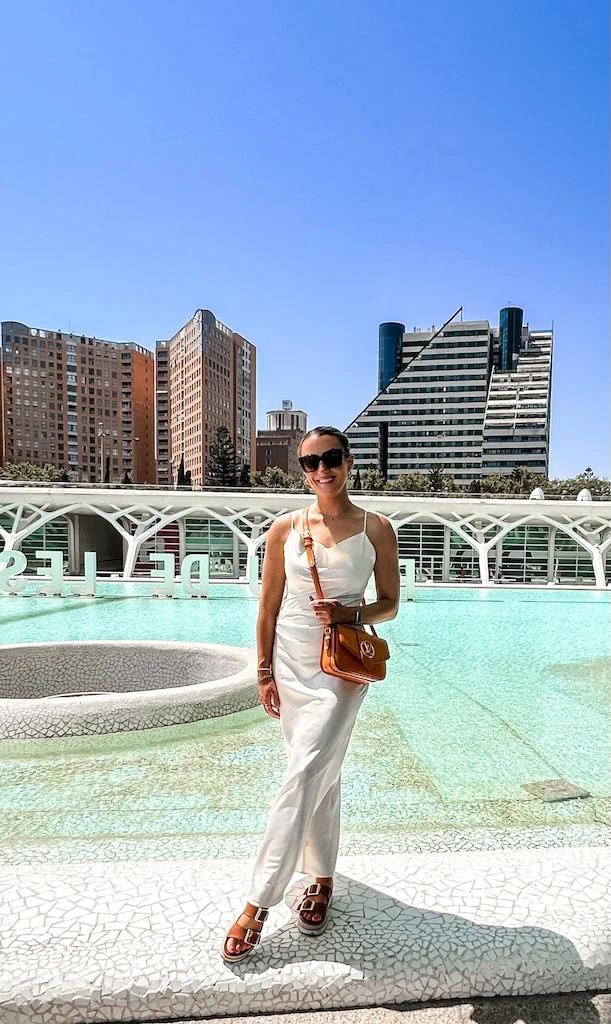
In this post, I’ll walk you through some of the best things to do in Valencia, and at the end, we’ll go over a few of Valencia’s top neighborhoods. I’ve even included a map of the attractions I talk about, so you get an idea of what’s nearby when you plan your trip!
Valencia – Fast Facts
LANGUAGE – Spanish and Valencian (most locals speak both)
CURRENCY – Euro (1 USD = ~0.88 euro)
TIME DIFFERENCE – +6 HOURS EST
CONVERTER PLUG NEEDED – Type C or F
TRANSPORTATION – Walk, Uber, Metro, Bus
Intro To Valencia
Valencia is a coastal city on the east side of Spain known for its sunshine, beaches, and old-world charm (fun fact – this city clocks 300 days of sunshine per year…are we moving yet?!). It’s Spain’s 3rd largest city behind Madrid and Barcelona.
I took a weekend trip to Valencia while I was living in Barcelona, and it took me about 3 and 1/2 hours by train. If you’re staying in Madrid, you can get here by train in about 2 hours.
Things Valencia is Known For:
- The birthplace of paella, a traditional Spanish rice dish.
- Nicknamed “Orange City” thanks to its orange groves
- Las Fallas Festival – runs from March 15-19 in honor of Saint Joseph, the patron saint of carpenters. Think food, fireworks, and art – it’s one big party!
- Horchata – local cold drink made from tiger nuts. The taste kiiiiind of reminds me of a chai latte?
If you want to try paella, one of the locals told me some of the best places to try paella in the downtown area include Lavoe, Llisa Negra, and Casa Roberto. If you’re near the beach, check out Neptune and Casa Pepica.
Explore Valencia Attractions with Get Your Guide
The Best Things To See and Do in Valencia
1. Walk Around the City of Arts and Sciences
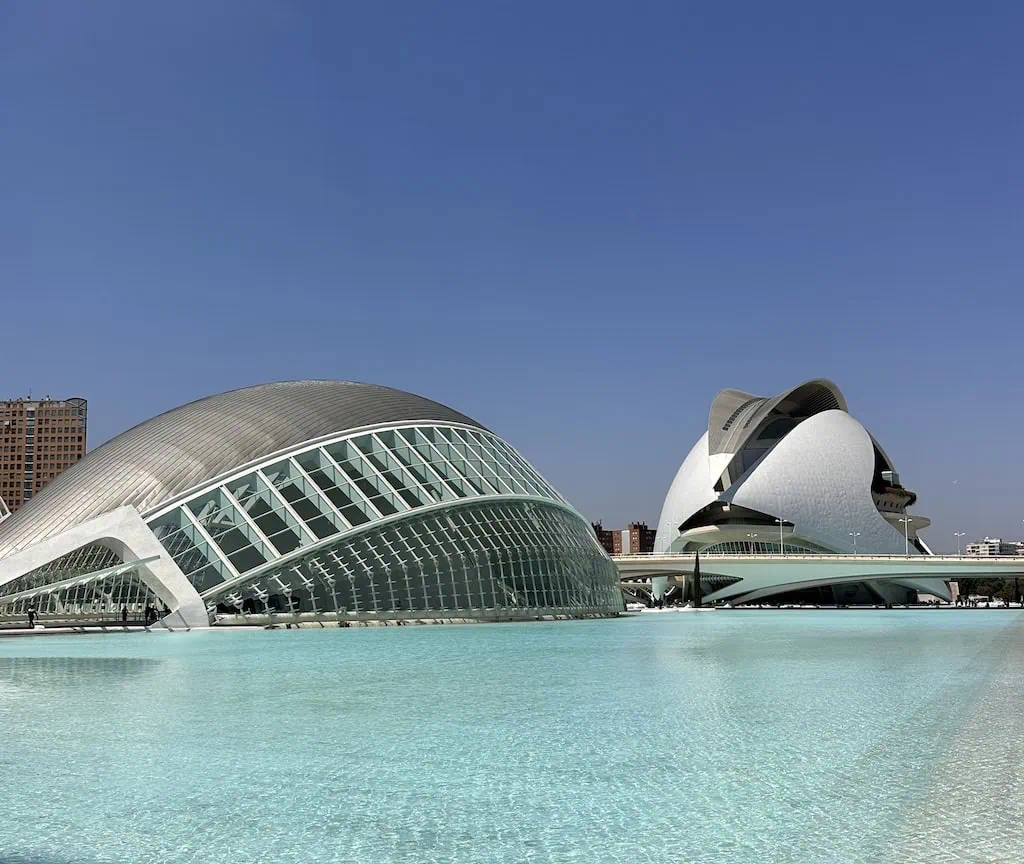
The City of Arts and Sciences is is Valencia’s most iconic modern landmark, designed by Santiago Calatrava and Félix Candela. The complex features futuristic white architecture surrounded by reflecting pools. A few of the things you’ll find here are:
- L’Hemisfèric (IMAX cinema and planetarium shaped like a giant eye)
- Museu de les Ciències Príncipe Felipe (hands-on science museum)
- L’Oceanogràfic (Europe’s largest aquarium)
- Palau de les Arts Reina Sofía (opera house and performing arts center)
- Umbracle (landscaped walkway and garden with panoramic views)
The downside of TCOAAS is that it’s a bit out of the way from some of the other things in the city center. You will have to either Uber or take a bus here…but I think it’s worth it. While this isn’t the type of architecture you expect to see in Europe, I thought it was really cool and futuristic looking. Even if you don’t go inside any of the buildings, it’s still really cool to walk around. I can’t say I’ve ever seen anything like this anywhere else in Spain!
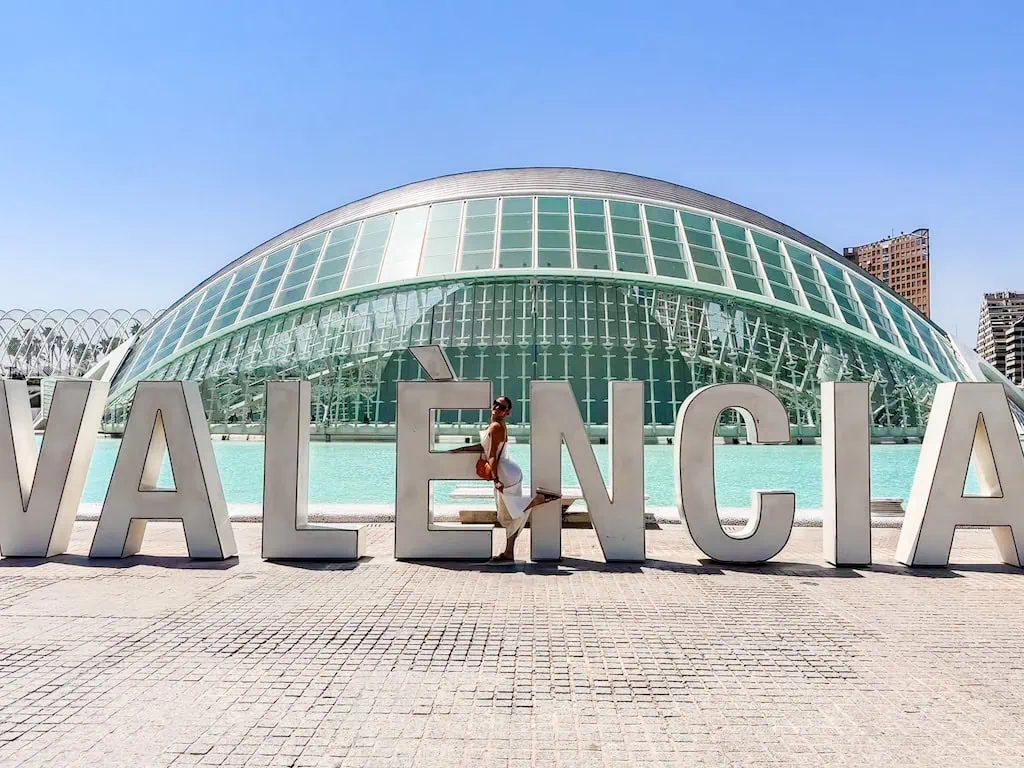
2. See the Holy Grail Inside Valencia Cathedral and Climb the Miguelete Tower
The Valencia Cathedral – aka “Cathedral La Seu” – is an architectural mix of Gothic, Romanesque, Baroque, and Neoclassical styles. It is located in Plaça de la Reina in the La Seu neighborhood. It was was built between the 13th and 15th centuries and claims to house the Holy Chalice (believed by many to be the Holy Grail) in a small chapel. To the left is the Migulete Tower, the cathedral’s bell tower. You are able to climb the tower’s 207 stone steps for panoramic views over Valencia’s historic center and beyond.
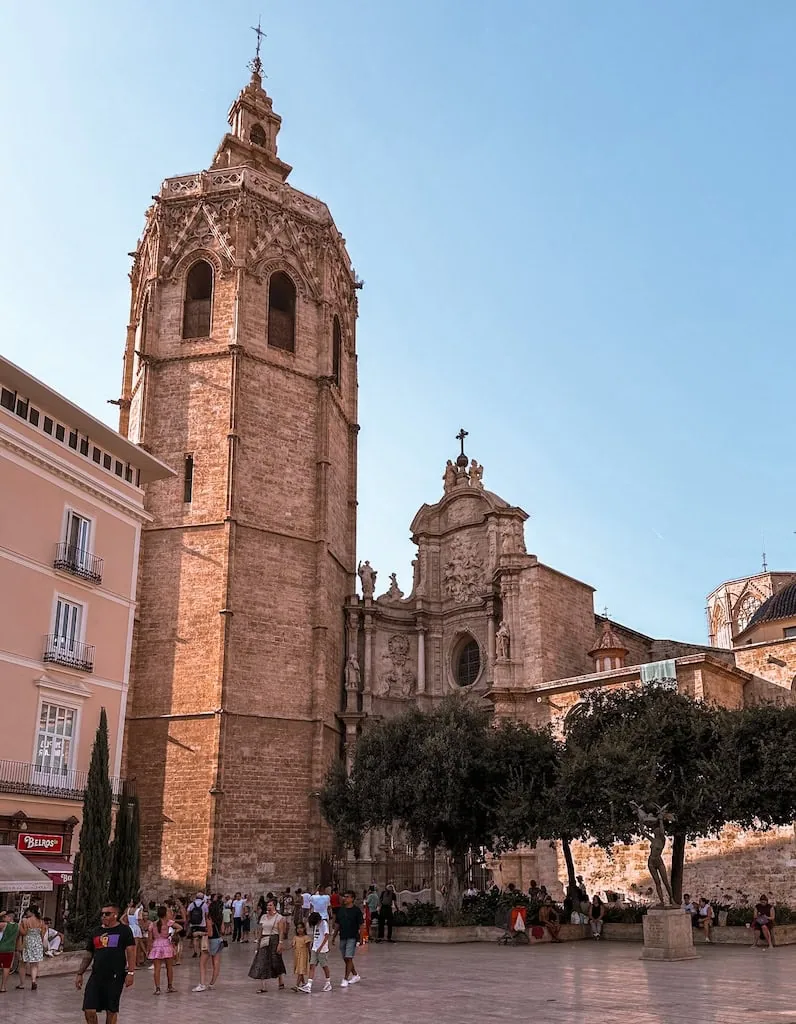
3. Walk Through Mercado Central
Spain is known for their “mercados,” which are massive fresh produce markets…and the Mercado Central in Valencia is one of the coolest I’ve seen. The outside is made up of colorful ceramics, wrought iron, and stained glass…almost as if an industrial building collided with a church. Inside, over 1,000 stalls sell everything from fresh seafood and jamón ibérico to saffron, fruits, olives, and local cheeses. As you can imagine, it gets busy…but it deserves a walk-through at the very least!
- Pro Tip: Mercado Central is only open from 7:00 am to 3:00 pm and is closed Sundays and holidays
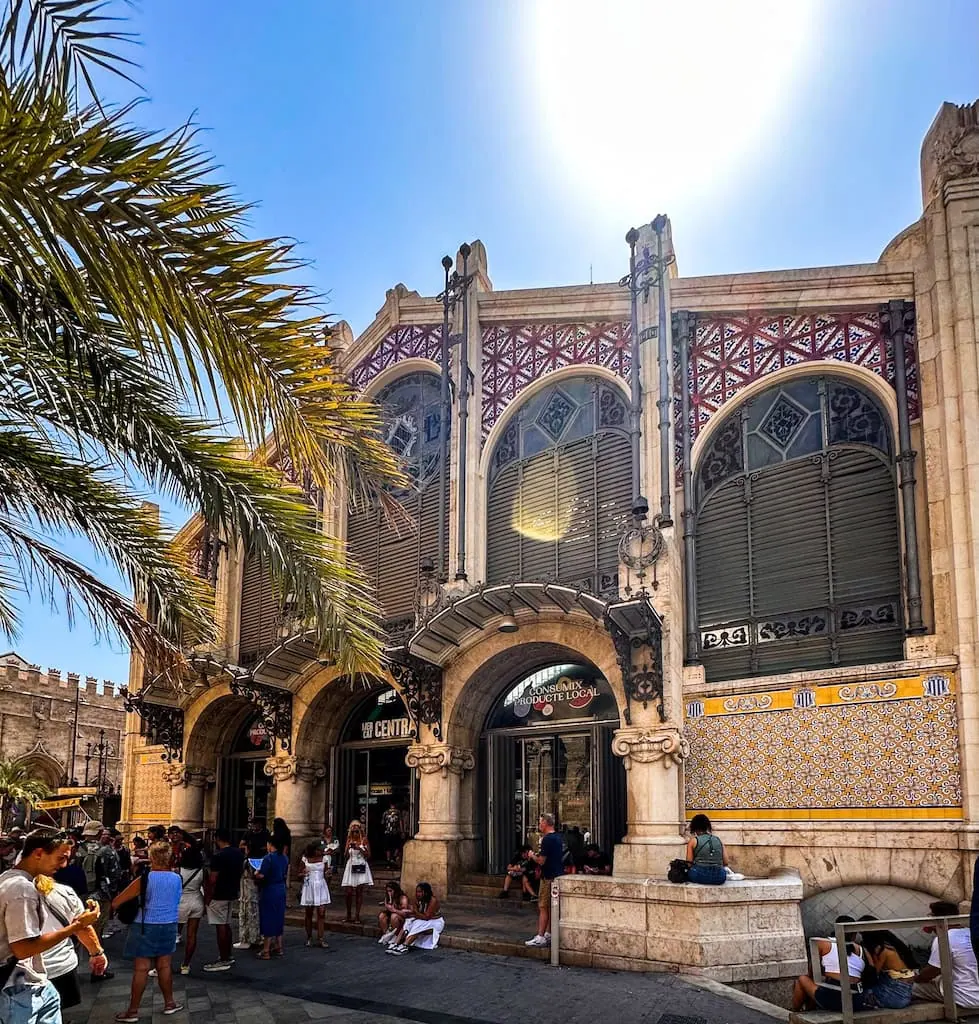
4. Go Inside The Silk Exchange (La Lonja de la Seda)
The Silk Exchange (La Lonja de la Seda) is located right next to Mercado Central and is a UNESCO World Heritage Site. It was once the hub for Valencia’s silk and textile trade, and is said to be one of Europe’s best examples of late Gothic civil architecture. Personally, I do not think the outside of this building looks Gothic, but maybe that’s why I’m a writer and not an architect. I digress. The point is, go inside. It only costs 2 euro, and it looks like this:
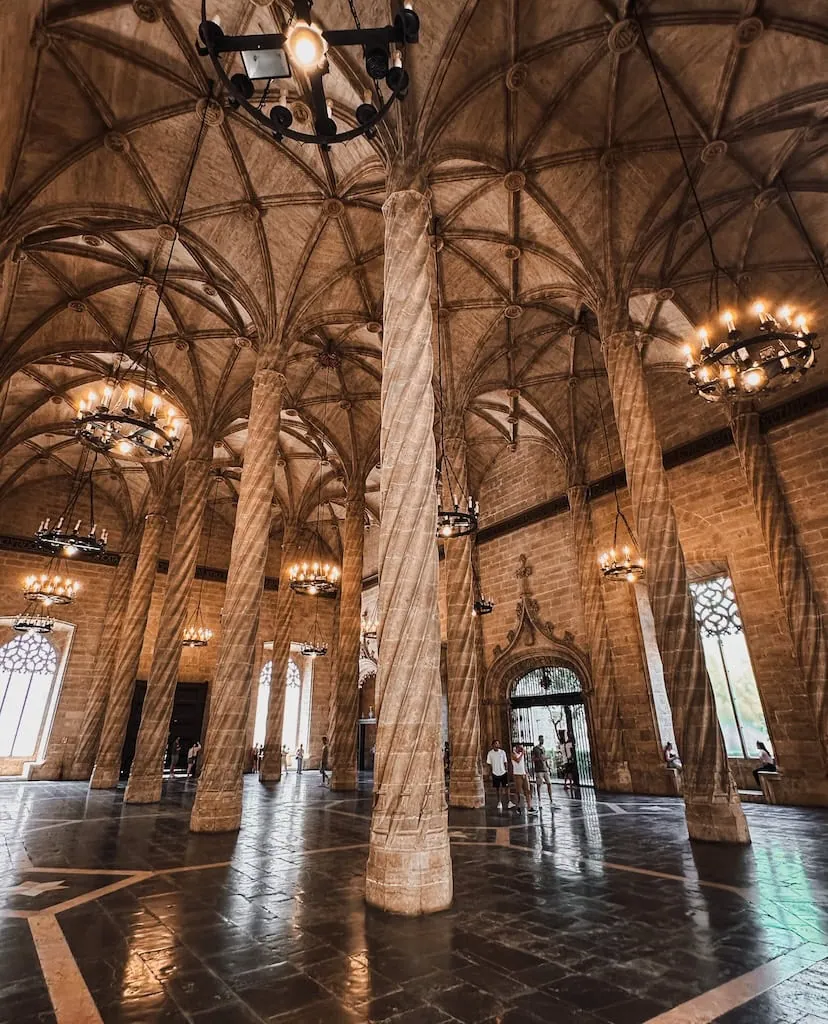
As you can see, the Sala de Contratación (the main hall, aka Hall of Columns) features soaring twisted columns and a vaulted ceiling that look like stone palm trees. Pair this with the medieval chandeliers, and you’re primed for a great Instagram moment.
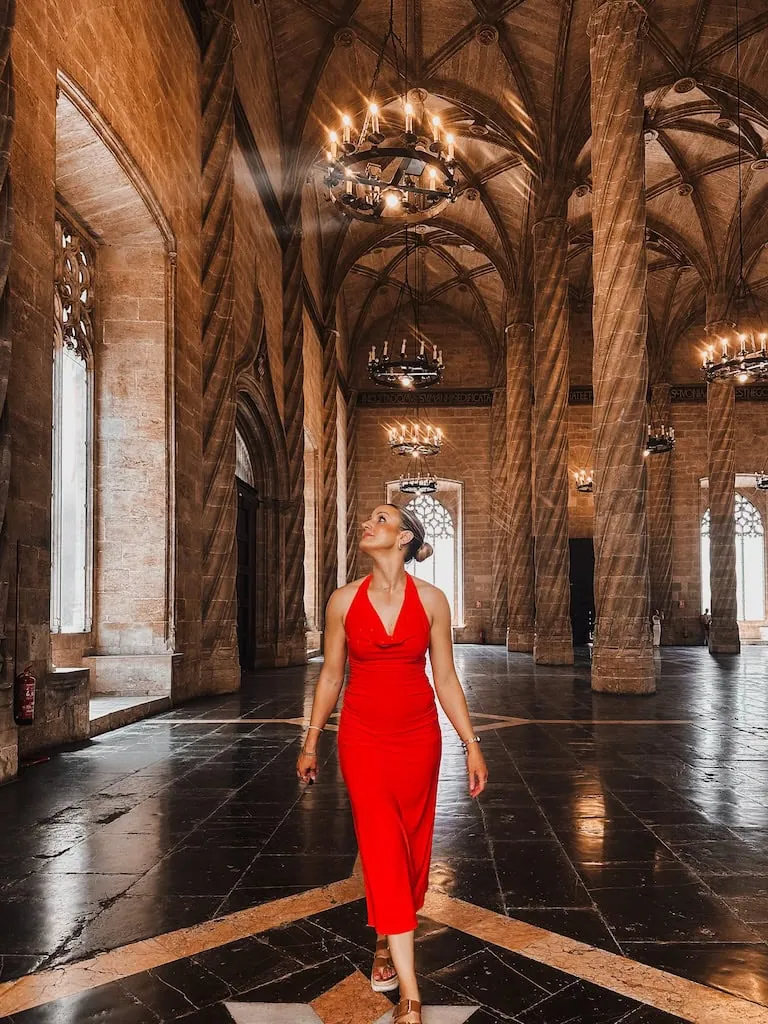
5. Go Shopping on Calle Colón
Calle Colón is Valencia’s main shopping street, located in the Eixample neighborhood. I love to shop, so coming to this area was pretty high on my list. Here, you’ll find El Corte Inglés, Spain’s famous multi-story department store, as well as popular fashion chains like Zara, Mango, BIMBA Y LOLA, and Massimo Dutti. While you’re here, pop down a few of the side streets like Calle Don Juan de Austria and Jorge Juan for more boutique shops and cafes. A place I particularly liked was Begin Jardín Secreto, a secret-garden themed cafe that would be perfect for grabbing lunch.
- Pro Tip: Valencia doesn’t really have any designer stores, so if you’re wanting to REALLY treat yo’self, you’ll need to visit Barcelona or Madrid.
6. Check Out the Museum of Fine Arts (Museo de Bellas Artes de Valencia)
The Museum of Fine Arts is Spain’s second-largest art gallery, after the Prado Museum in Madrid. The art collection includes over 2,000 works, with a strong focus on Gothic and Renaissance art. Notable artists represented include Velázquez, El Greco, Goya, Murillo, and Sorolla (a Valencia native). You’ll also see sculptures, decorative arts, and an impressive collection of altarpieces from churches around the region. The best part? IT’S FREE TO ENTER! **throws up hands**
7. Spend Your Sunday at the Beach or the Park
Many shops and businesses are closed on Sundays in Valencia, so what better way to relax with the rest of the city than go to a park or the beach? 2 of the most popular beaches in Valencia are Malvarrosa Beach and Patacona Beach, which are essentially right beside each other in the El Cabanyal neighborhood. Word of caution: the beaches will be crowded, especially if you’re here during the summer. If you are staying near the city center of Valencia, it’s about a 35 minute bus ride to the beach.
If you’re more of a park person than a beach person, some of Valencia’s most popular parks include:
- Jardín del Turia (~16 minute walk from city center)
- Jardins del Real / Vivers – connected to Jardín del Turia (~22 minute walk from city center)
- Jardín Botánico – botanic gardens at the University of Valencia (~11 minute walk from city center)
8. Eat Dinner at Como Yo
Como Yo is a restaurant with Mediterranean and Ukrainian influences that serves amazing tapas and cocktails. I stumbled upon it while walking along the street admiring Jardín del Turia, and it was one of my favorite meals I had in Spain. I got a couple of the seafood tapas, 2 cocktails, and the chocolate dessert and loved all of it. Truthfully, I wanted to try so many things on the menu, and the staff was very helpful at suggesting food and drink rec’s. Inside, it has a modern, cozy, and refined design, complete with mood-setting music and a welcoming ambiance. Be sure to make reservations.
9. See the Torres de Serranos (Serrano Towers)
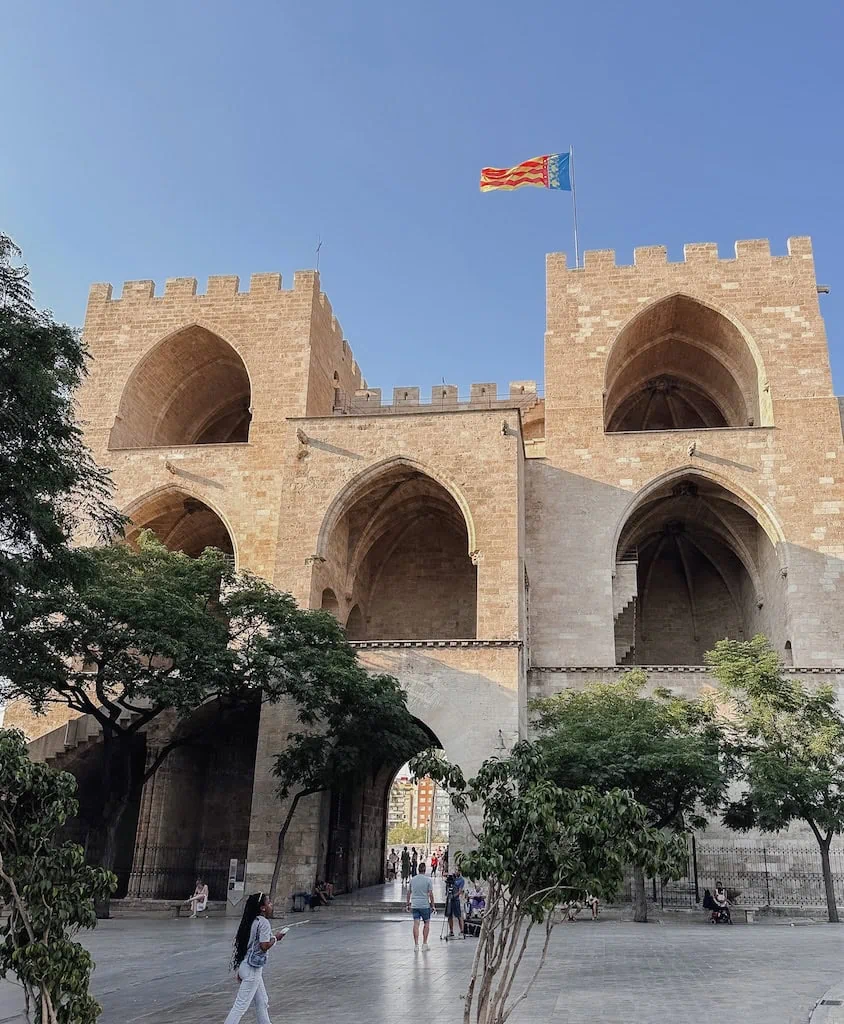
The Serrano Towers are one of the fortified gates of the ancient city wall of Valencia (the other main one is the Quart Towers). It was built between 1392 and 1398 as part of Valencia’s medieval defensive walls. At one point, they were both a symbol of prestige for welcoming royal guests and a fortified stronghold to protect against attack. Today, you can climb to the top for panoramic views over the old town and the Turia Gardens if you wish. Today, the Serrano Towers are especially famous for hosting the annual Fallas Festival opening ceremony, known as La Crida.
- Pro Tip: The Serrano Towers reminded me a lot of the Pile Gate that I saw in Dubrovnik, Croatia…and if you’ve never been to Croatia, add it to your list ASAP!
10. See The Lights Show at the Church of San Nicolás (Saint Nicholas)
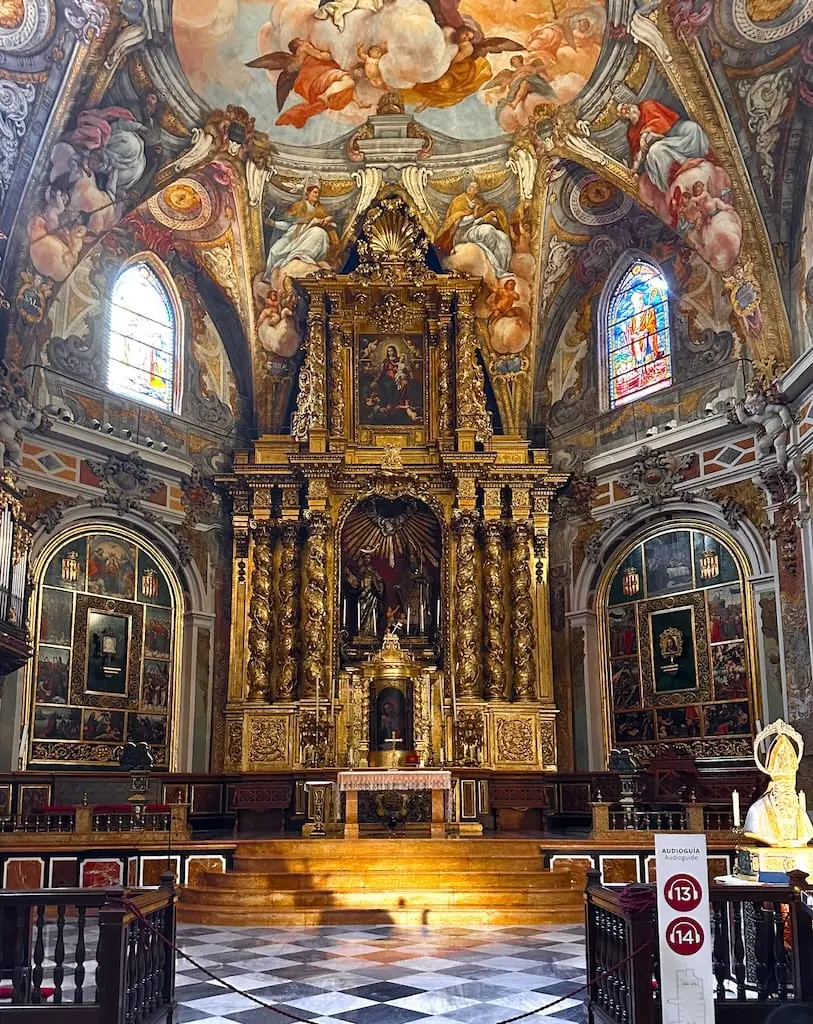
The Church of San Nicolás is a Baroque church in Valencia’s old town. It has been called “Valencia’s Sistine Chapel” because of the frescoes on the walls and ceiling that depict the lives of Saint Nicholas and Saint Peter Martyr. This church was originally built in a Gothic style in the 13th century, but was later renovated in the 15th century and then given Baroque interiors in the 17th century. It was then restored again between 2013 and 2016, revealing the original vibrancy of the colors. In other words, nothing you’re seeing is the original church…but that doesn’t mean it isn’t magnificent!
Touring the Church of San Nicolás will cost you 15 euro, but IMO, it’s a must-do. When you go inside, you get an audioguide that walks you through each part of the chapel. And you can’t miss the Light of Saint Nicholas – an immersive light show inside the church beginning every hour on the hour at 11:00am. I have never seen anything like this in an ancient church before and it was such a cool experience.
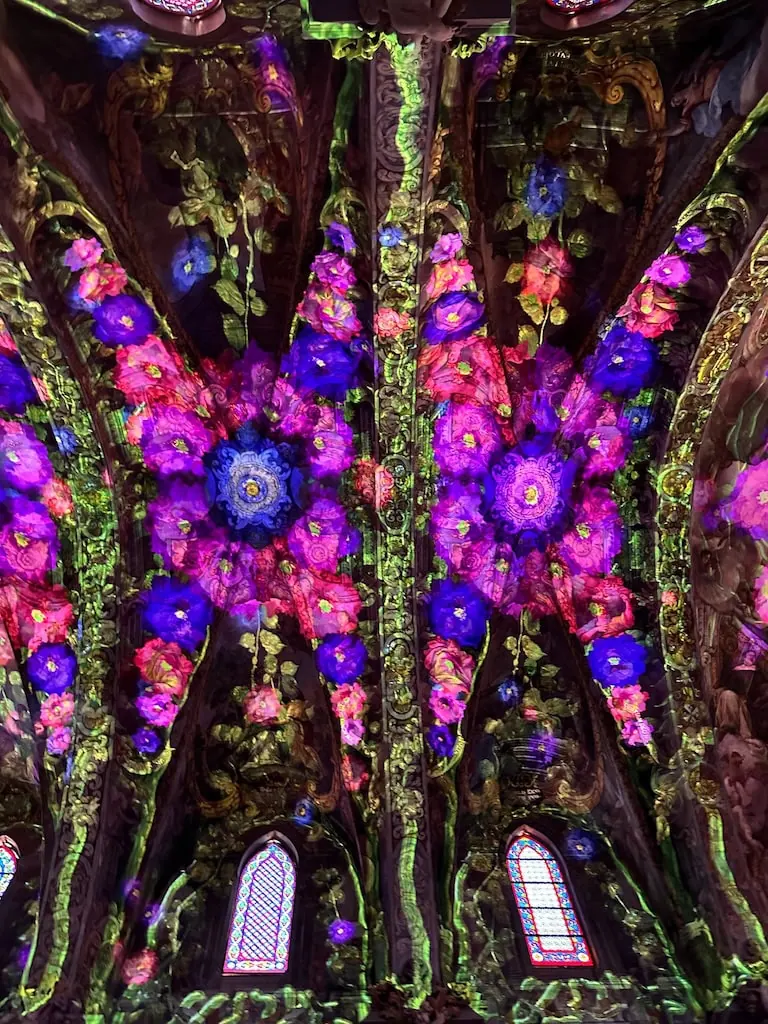
11. Eat Brunch at Coco Social House
Anyone who knows me in real life will tell you my favorite “breakfast cheat meal” is pancakes. Having said that, I have come to realize that a lot of the pancakes in Spain come smothered with Nutella or some other sugary concoction on top of them. While I admire the “treat yo’self” mindset, personally it’s a tad much for me. Needless to say, I found my perfect classic pancakes at Coco Social House, and loved them so much I ate here twice.
Even if you aren’t a pancake person, they have plenty of options to choose from. If you don’t believe me, believe the 4.7 star reviews from everyone on Google ;).
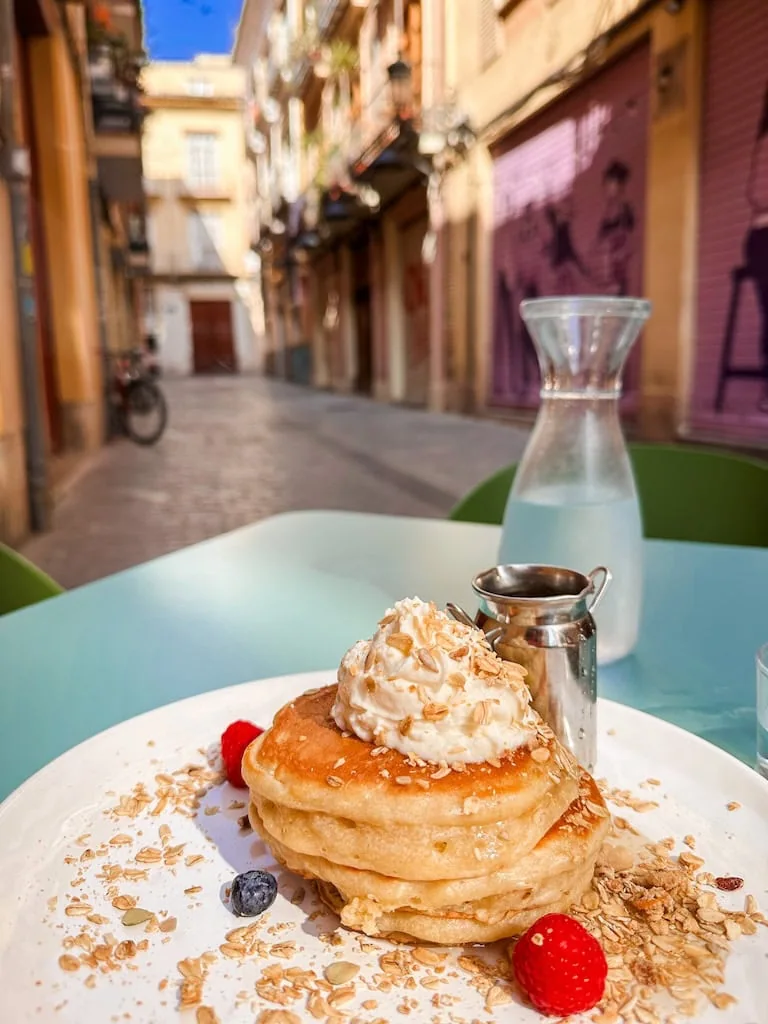
Explore Valencia’s Top Neighborhoods
Now that you know what to do, I’m going to walk you through the neighborhoods where all the action is! The main areas of Valencia are divided into the Ciutat Vella (the old city) and Eixample (the new city). And don’t worry – I haven’t forgotten the beach!
Ciutat Vella – The Old City
The Ciutat Vella is the historic core of Valencia, where you’ll find a maze of cobblestone streets, centuries-old landmarks, and lively plazas. It’s divided into several smaller neighborhoods, each with its own character:
- El Carmen – The city’s most bohemian quarter, known for its street art, quirky bars, and mix of medieval buildings with modern energy. Home to the Serrano Towers and Quart Towers, once part of the old city walls. At night, it’s one of Valencia’s liveliest areas.
- La Seu – The oldest part of Valencia, centered around Valencia Cathedral (La Seu) and Plaza de la Virgen. It’s full of Gothic, Romanesque, and Baroque architecture.
- El Mercat – Anchored by Mercado Central and La Lonja de la Seda (The Silk Exchange). This is where you go for a sensory overload of food, color, and bustling market life. The street of Calle Caballeros makes for a particularly scenic walk.
- La Xerea – A quieter, elegant part of the old city, home to churches, palaces, and museums like the Museum of Fine Arts. Great for slow, scenic strolls.
- Sant Francesc – Known for Plaza del Ayuntamiento, Valencia’s main square, lined with grand buildings, shops, and cafes. This is a major area for the Fallas Festival.
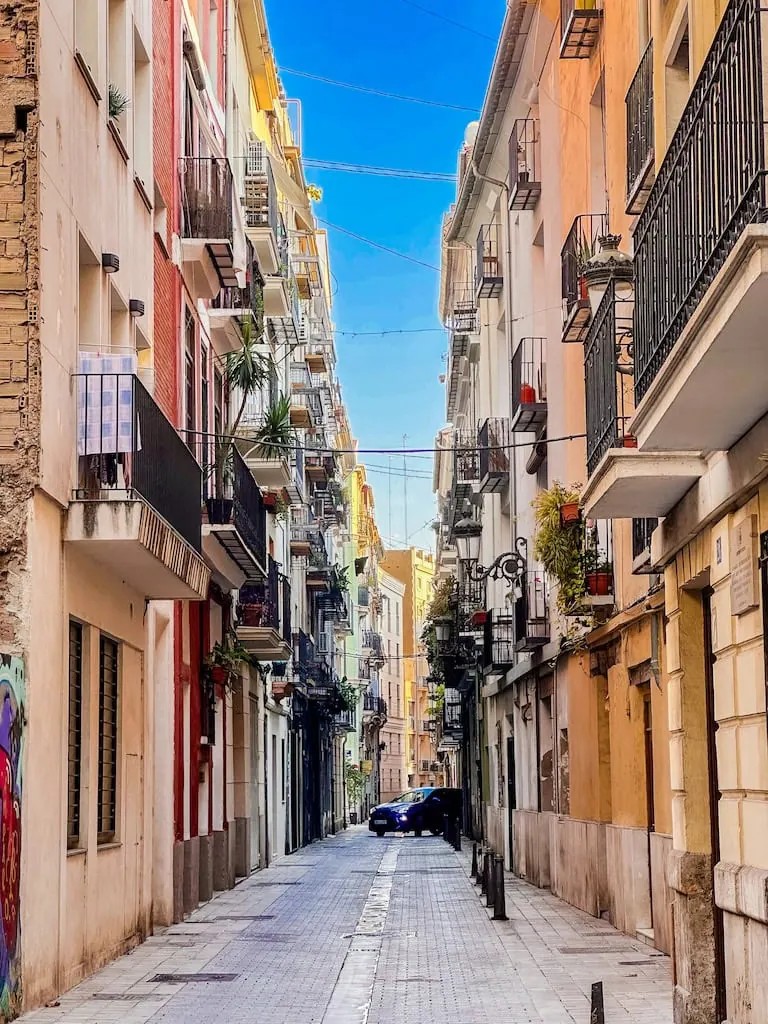
Top-Rated Hotel Recommendations in Ciutat Vella Valencia
- Caro Hotel – Boutique 5-star hotel set within a restored 19th-century palace
- MYR Palacio Vallier – Boutique hotel in a 19th-century mansion. Offers Art-Deco glamor, a rooftop terrace with sweeping city views, and a vintage cocktail bar inspired by perfumery-era decor
- Only YOU Hotel Valencia – Hotel with bright, eclectic, and modern rooms, some with private terraces and panoramic city views
Eixample – The New City
South of the old town lies Eixample, Valencia’s elegant, modernist side. Its broad streets, grid layout, and ornate façades give it a more modern, upscale vibe.
- Russafa (Ruzafa) – I was told this area was a hip, multicultural hub with indie boutiques, art galleries, coffee shops, and an ever-growing foodie scene. However, went I went here, it seemed a little…dead. I don’t know if this is because I was here in August and a lot of things were closed?? Regardless, they tell me this neighborhood is cool – LMK what you think in the comments!
- Gran Via – A stylish, residential area with tree-lined avenues, upscale boutiques, and plenty of tapas bars. Feels quieter and more local.
- Pla del Remei – Known for its luxury shopping along Calle Colón and some of the city’s best examples of Valencian modernist architecture.
- Ensanche – Often used as an umbrella term for Gran Via, Pla del Remei, and Russafa together — it’s Valencia’s “new city” compared to the medieval core.
If you’re visiting during Las Fallas, don’t miss Calle Literato Azorín and Calle Cuba. These streets and their elaborate light installations are among the most spectacular in the city. Even outside festival season, these streets and the surrounding area are nice for strolling between hip coffee shops and stylish boutiques.
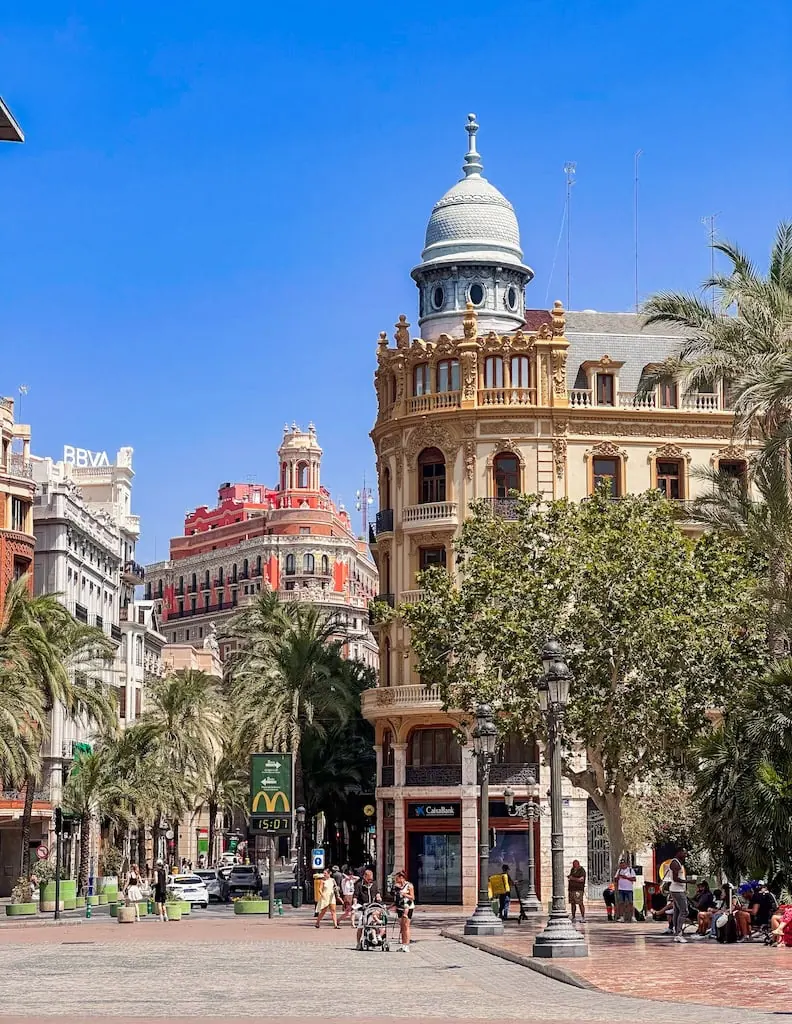
Top-Rated Hotel Recommendations in Eixample Valencia
- NH Collection Colón – Upscale chain hotel situated between Pla del Remei and Gran Via — ideal for shopping along Calle Colón and quick metro/train access.
- One Shot Puerta Rufaza – A modern, stylish boutique option located in the Russafa neighborhood
- Hotel Pathos by Mimood Aparthotels – Boutique 4-star aparthotel that boasts around 19 uniquely styled rooms and apartments.
El Cabanyal – The Beach Neighborhood
El Cabanyal is the city’s historic fishing quarter that stretches along the coastline. Expect streets lined with brightly painted houses, tiled façades, and a slightly bohemian, lived-in vibe. You’ll find traditional seafood restaurants, modern tapas bars, and an artsy undercurrent with small galleries and murals scattered around. The beach is only a short walk away, making it easy to combine a morning of wandering with an afternoon by the Mediterranean.


